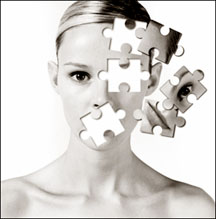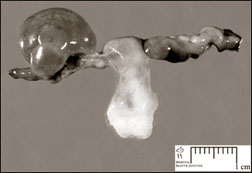|

[email protected]
'Mental health' controversy in Sri Lanka
by Dr. H. R. S. Keerthisinghe, Consultant
Counselling Psychologist
Health could be conveniently discussed and addressed when we focus on
the biological structure. It is easy to discuss on the healthy function
of the internal organs and external organs. It could be defined as a
state of being well in body and /or mind.
 Here, many terminology such as, soundness, wellbeingness etc., are
widely used. According to World Health Organisation (WHO) description,
physical, mental, social, and spiritual well-beingness is identified as
Health. There is no very specific meaning even in dictionaries. Here, many terminology such as, soundness, wellbeingness etc., are
widely used. According to World Health Organisation (WHO) description,
physical, mental, social, and spiritual well-beingness is identified as
Health. There is no very specific meaning even in dictionaries.
Broadly speaking, mental health is nothing else, but, happiness. This
could be identified as mental satisfaction, contentment or serenity. An
individual may enjoy this state of mental health or mental happiness, by
ways of accomplishment of biological needs, by maintaining a healthy
body, and achievements up to the levels of mental needs.
Happiness is expressed by one's behaviours, cognitive functions, and
affective processes. This could be addressed through different
approaches such as psychodynamic approach, social learning approach,
cognitive approach, behaviourial models, psychopathological approach
etc.
Degree of 'Happiness' differs from person to person, from culture to
culture, and from situation to situation. By fulfilling biological
needs, though temporary, one may experience 'happiness'. Hunger-food,
thirst-drink, warmth-love-care, are examples.
An individual may experience 'happiness' by achieving his aspirations
and goals which is a little higher than the former. Passing
examinations, finding an employment, higher professional achievements
are examples.
The family is the basic unit of the human society. A study was made
among 880 families randomly selected from 44 villages - in seven
provinces in Sri Lanka. The end result was not that healthy.
Nearly 63% of families were dysfunctional, broken, do not enjoy the
happy family life style or in the margin of sinking. Father's role -
mother's role - child's role were not identified and enjoyed by family
members.
Mostly the parental role was like that of an authoritative type.
Child's role was like that of an adoptive type. If one enjoys a healthy
and democratic family function and lifestyle, then members of that
family experience another level of happiness.
This is very necessary if we are to think of a healthy future of our
society. Triangular functional concepts of 'LOVE', 'FUN', 'CONTROL' is
activated within such a family, so that all members would revere others
with total understanding, acceptance, and sacrificial sharing.
The most highest level of mental happiness is, if an individual could
Unconditionally forgive even his opponents and unconditionally accept
others - unconditional forgiveness and unconditional acceptance, then
that supra individual experiences and enjoys lasting highest mental
happiness which could be identified as the foundation and basement of
spirituality.
This is the deepest, profound, highest level of mental happiness. For
an average ordinary man, this happiness would only be a 'mirage'. This
'happiness' 'mental health' penetrates all boundaries of scientific and
logical doctrines, findings, and barriers.
Great universal lives of Lord Buddha and Lord Jesus Christ are
leading best examples. They live in the hearts and minds of the human
race for generations.
In the context of conventional mental health discussions, two printed
materials, clinically diagnostic guidelines, are available for the
study. They are, ICD-10 (International Classification of Mental and
Behaviourial Disorders), and DSM-IV (Diagnostic Statistical Manual of
Mental Disorders).
According to ICD-10, which is introduced by WHO, and which is used by
Mental Health Professionals of most Asian countries, all mental
disorders could be arranged in an hierarchical order as follows: First,
in the hierarchy, more than 90% are related with psychological problems
which has no say in the psychiatric or medical background. These
problems go beyond the domain of a psychiatrist.
His knowledge is limited in the field of different disciplines of
psychology. For an example, general psychology, social psychology,
industrial psychology, behaviourial psychology, educational psychology,
experimental psychology, child psychology, adolescent psychology,
marital psychology, conflict psychology, intelligence, motivations,
urges, goal settings, personality models, learning abilities, gifts,
talents, skills etc.
Here the psychiatrist's role is limited. For such psychological
problems one seeks professional help from a Psychologist (who is not
necessarily a medical person), qualified Psychological Counsellor,
Psychotherapist, guidance worker (for educational guidance and career
guidance).
Also non-professional help is sought from the clergy, teachers,
educators, parents, adults etc. A psychologist after his BA/BSc, he
qualifies his Post Graduate MA/MSc or PhD on a discipline of Psychology
and obtains an institutional or clinical training. For this, nearly
10-12 year period is consumed. Professionally qualified persons are
governed and monitored by ethical frame work of their school of thought.
Those who are not qualified and cheating the public may be dealt with
the Public Cheating Act. Those who are concerned have to make the public
aware of this situation.
Clinical psychologists have to get their registrations from the SLMC,
and other psychologists have to get their names Gazetted and published
for the awareness and benefit of the General Public.
Second, third and fourth phases of the hierarchy, are to be dealt by
a psychiatrist who is medically qualified (MBBS, and MD or Post graduate
qualifications with clinical psychiatric training and registration in
the SLMC). His academic and professional training also consumes about 12
years.
If 90% of the population are having psychological problems, nearly
7-8% are suffering from psychiatric problems which need psychiatric
attention and medication.
American Psychologists Association views that simple generalized
anxiety disorders can be non-medically treated by psychologists,
psychotherapists, without psychiatric intervention. But, proper
diagnosis is the most difficult criteria.
Psychologists, counsellors, psychotherapists, should know their
limitations and boundaries. It is far better to refer patients to
psychiatrists, without doing any harm to the patient and the society.
On the other hand, if an individual comes to a psychiatrist, who is
facing with psychological problems, it is far better to refer such
individuals to psychologists, and counsellors for the benefit of the
society at large. Those who come to psychologists and counsellors are
not patients. They are either support seekers or counselees.
All psychotic patients, for an example, schizophrenic patients,
(nearly 2% of the population) of course there is no doubt, come under
direct management of the psychiatrist. These patients need continual
medication as per advise of the psychiatrist, and lasting social support
for better psycho-social integration.
Here, not only the psychiatrist, but supportive staff, occupational
therapists, psychotherapists, psychiatric social workers, guardians,
social agencies, care-givers, all have to get together for the
betterment of the patient and the society at large.
Nearly 1% of the population are coming under the 'mental disorders'
due to organic disorders. Here, the neuro-physician's role comes in.
Such patients when they present psychotic or mental symptoms, then
psychiatrist's intervention is an essential.
In the context of mental health in Sri Lanka, one disciplined
professionals cannot supercede the other. For an example, it is not
ethical for psychiatrists to supercede psychologists or counsellors.
psychiatrists can have a legal document to see to the welfare of mental
patients.
It is not ethically sound for them to authoritatively control over
the other categories of professionals. Let them have their own
monitoring system under their strict ethical frame work.
Because, happiness cannot be controlled by anyone. It is a
fundamental right of a human being. What could be suggested is that all
mental health professionals have to get together to an understanding
floor - share each other's cooperation to serve and heal our wounded
motherland.
Beware of cysts
Exclusively for women :
by Rosanne Koelmeyer Anderson
Something most common in women from their teens to mid age is the
formation of ovarian cysts.
|

An ovarian cyst |
Generally, most cysts go unnoticed as most cysts don't give rise to
any pain or are very often detected only if routine investigations are
carried out as a result of patients complaining of vague abdominal pain
and fullness or severe abdominal pain as in the case of a twisted or
ruptured ovary.
The symptoms that arise could often mimic appendix, bowel or an
epitomic pregnancy or even pelvic infections and could lead to
complications if not detected in time.
Many women are treated today at the De Soysa Maternity Hospital (DSMH),
Colombo for ovarian cysts Dr. Hemantha Dodampahala, Consultant
Obstetrician and Gynaecologist of the DSMH explained at a discussion on
'common gynaecological problems faced by women today'.
Dr. Dodampahala emphasized that after the age of fifty ,every woman
should go for a screen for ovarian cancers. It has been documented that
nearly 80 per cent of patients with ovarian cancers are those who have
presented themselves at a very late stage due to lack of knowledge of
the formation of cysts and end up having less than five years to live.
Most of such occurrences are sporadic, however, if the patient has a
family history of cyst formations then the chances of developing cysts
are greater.
Diet could also contribute to the formation of cysts particularly
when the diet contains a lot of saturated fats and products from white
flour, like pasta, excess meat or rice as a lot of these foods lack the
fibre necessary for good health, they may be the reason for imbalances
in the levels of hormones in the body and could cause the repeated
appearance of ovarian cysts.
A poorly performing liver could also be a contributory factor as an
impaired liver will not be able to contribute to detoxification of
hormones in a timely manner, as well as the possibility of cysts caused
due to congestion in the pelvic region due to an impaired circulatory
system that hinders the flow of blood to that part of the body.
Ovarian cysts are small fluid-filled sacks that develop on a woman's
ovaries. Most cysts are harmless, but some may cause problems such as
bleeding and pain, and surgery may be required to remove those cysts.
It is important to understand how these cysts may form. At the time
of ovulation, the covering of the ovary tears open in order to release
the egg. Within hours, this covering heals, and the cells in the ovary
form a structure called the corpus lustrum.
The corpus lustrum produces progesterone, the hormone that prepares
the uterine lining cells for the arrival of the fertilised egg. Every
menstruating woman, every month, forms a corpus lustrum. However, cells
can produce fluid within the corpus lustrum and form a cyst.
While a corpus lustrum cyst is usually no larger than a small marble,
sometimes so much fluid is produced by a that of a cyst of a few inches.
The good news is that, like follicular cysts, practically all corpus
lustrum cysts will go away by themselves in a few weeks. Follicular
cysts and corpus lustrum cysts are collectively referred to as
functional cysts.
"The most common types of ovarian cysts are called functional cysts,
which result from a collection of fluid forming around a developing egg.
Every woman who is ovulating will form a small amount of fluid around
the developing egg each month.
The combination of the egg, the special fluid-producing cells, and
the fluid is called a follicle and is normally about the size of a pea.
For unknown reasons, the cells that surround the egg occasionally form
too much fluid, and this straw coloured fluid expands the ovary from
within.
If the collection of fluid gets to be larger than a normal follicle,
about three-quarters of an inch in diameter, a follicular cyst is said
to be present. If fluid continues to be formed, the ovary is stretched
as if a balloon was being filled up with water.
The normally white covering of the ovary becomes thin and smooth and
appears as a bluish-grey. Follicular cysts may rarely become as large as
three or four inches. The majority of these cysts, even the large ones,
go away after a month or two as the extra fluid dissolves back into the
blood stream."
"Women normally have two ovaries that store and release eggs. Each
ovary is about the size of a walnut, and one ovary is located on each
side of the uterus. One ovary produces an egg each month, and this
process starts a woman's monthly menstrual cycle.
The egg is enclosed in a sac called a follicle. An egg grows inside
the ovary until estragon, a hormone, signals the uterus to prepare
itself for the egg. In turn, the uterus begins to thicken itself and
prepare for pregnancy. This cycle occurs each month and usually ends
when the egg goes unfertilized. All contents of the uterus are then
expelled if the egg is not fertilized. This is called a menstrual
period".
* Follicular cyst: This type of simple cyst can form when ovulation
does not occur or when a mature follicle involutes (collapses on
itself). It usually forms at the time of ovulation and can grow to about
2.3 inches in diameter. The rupture of this type of cyst can create
sharp severe pain on the side of.
* Corpus lustrum cyst: This type of functional ovarian cyst occurs
after an egg has been released from a follicle. After this happens, the
follicle becomes what is known as a corpus lustrum. If a pregnancy
doesn't occur, the corpus lustrum usually breaks down and disappears. It
may, however, fill with fluid or blood and stay on the ovary. Usually,
this cyst is on only one side and produces no symptoms.
* Haemorrhagic cyst: This type of functional cyst occurs when
bleeding occurs within a cyst. Symptoms such as abdominal pain on one
side of the body may be present with this type of cyst.
* Dermoid cyst: This is an abnormal cyst that usually affects younger
women and may grow to six inches in diameter. This cyst is similar to
those present on skin tissue and can contain fat and occasionally bone,
hair, and cartilage. o The ultrasound image of this cyst type can vary
because of the spectrum of contents, but a CT scan and MRI can show the
presence of fat and dense calcification.
* Endometriomas or endometrioid cysts: This type of cyst is formed
when endometrial tissue (the mucous membrane that makes up the inner
layer of the uterine wall) grows in the ovaries.
It affects women during the reproductive years and may cause chronic
pelvic pain associated with menstruation. "I tell my patients to ignore
it from a worry stand-point, that more than likely it's of a functional
nature and should go away on its own. Usually the worst that will happen
is that she will be roped into at least two ultrasounds-one at the time
to document the size and type of cyst, and if it's a simple cyst (as
most functional ones are), another ultrasound in a month or so", Dr .
Dodampahala explained.
Besides relying on ultrasound and/or follow-up pelvic examinations,
another mainstay of evaluation and diagnosis lies with the temporary use
of the birth control pill.
The pill will "melt away" a functional cyst, but anything else will
remain unaltered by this treatment, making the pill a useful diagnostic
tool. After the pill a persistent cyst requires ultrasound for sure and
perhaps even laparoscope and other surgery, because no gynaecologist
wants to take a chance on ovarian disease. It may be deadly to do so.
Luckily, most evaluations of the ovary and cysts result in the
functional diagnoses that can be simply followed with follow-up
ultrasound or follow-up exam would sort out the problem.
DSMH has a long history and today is well equipped with
state-of-the-art technology to meet gynaecological necessities .The
hospital has to its credit the first caesarean delivery to be performed
in Sri Lanka which was done in 1905 and in 1907, the first organised
operating theatre is said to have come into being. During Dr.
Sinnathamby's term of office which lasted twenty years, he was
instrumental in establishing the De Soysa Lying-in-Home as the premier
training institute in midwifery.
Thus was recorded the greatest contribution of the De Soysa Hospital
to the people of Sri Lanka in addition to providing the clinical
services for women's' health when it initiated and developed training in
midwifery for midwives (1909), Nurses (1916) and Obstetrics and
Gynaecology for medical students (1915) and by the third decade of the
twentieth century changes occurred in the total healthcare structure in
Sri Lanka and De Soysa Hospital contributed as a leader in this sphere.
[email protected]
|
